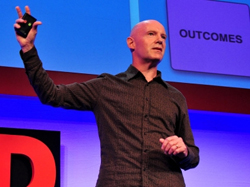
7) Compressed music makes you tired. However clever the technology and the psychoacoustic algorithms applied, there are many issues with data compression of music, as discussed in this excellent article by Robert Harley back in 1991.
My assertion that listening to highly compressed music makes people tired and irritable is based on personal and anecdotal experience – again it’s one that I hope will be tested by researchers.
8) Headphone abuse is creating deaf kids. Over 19 percent of American 12 to 19 years old exhibited some hearing loss in 2005-2006, an increase of almost 5 percent since 1988-94 (according to a study in the Journal of the American Medical Association by Josef Shargorodsky et al). One university study found that 61 percent of freshmen showed hearing loss (Leeds 2001).
Many audiologists use the rule of thumb that your headphones are too loud if you can’t hear someone talking loudly to you.
For example, Robert Fifer, an associate professor of audiology and speech pathology at the University of Miami Leonard M. Miller School of Medicine, says: “If you can still hear what people are saying around you, you are at a safe level. If the volume is turned so loudly that you can no longer hear conversation around you, or if someone has to shout at you at a distance of about 2 or 3 feet to get your attention, then you are up in the hazardous noise range.”
9) Natural sound and silence are good for you. These assertions seem to be uncontroversial. Perhaps they resonate with everyone’s experience or instinct.
10) Sound can heal. Both music therapy and sound therapy can be categorized as “sound healing.” Music therapy (the use of music to improve health) is a well-established form of treatment in the context of mainstream medicine for many conditions, including dementia and autism.
Less mainstream, though intellectually no more difficult to accept, is sound therapy: the use of tones or sounds to improve health through entrainment (affecting one oscillator with a stronger one).
This is long-established: shamanic and community chant and the use of various resonators like bells and gongs, date back thousands of years and are still in use in many cultures around the world.
Just because something is pre-Enlightenment and not done in hospitals doesn’t mean that it’s new-age BS. Doubtless there are charlatans offering snake oil (as in many fields), but I suspect there is also much to learn, and just as herbal medicine gave rise to many of the drugs we use today, I suspect there are rich resources and fascinating insights to be gleaned when science starts to unpack the traditions of sound healing.”
It’s worth it to check out the original article on CNN.com since it also contains the original TED video that the above came from.
Bobby Owsinski is an author, producer, music industry veteran and technical consultant who has written numerous books covering all aspects of audio recording. For more information be sure to check out his website and blog.
